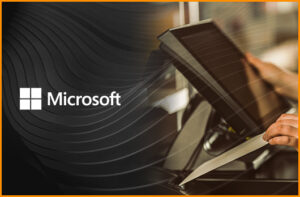When you are selecting the operating system for an IoT device, the details of the terms will have a dramatic effect on the device management and business results. Our customers typically choose Windows IoT licensing because they value the security and fast time to market it offers.
That said, if you have looked into Windows IoT before, you may have come across terms and acronyms that, while crucial to outlining the business implications of embedded licensing, may have been unclear. We want to make your Windows IoT licensing journey as easy as possible. Here we highlight some of the specific terms that manufacturers need to understand to build devices with Windows IoT.
Learn your Windows IoT licensing terms
Terms: LTSC (Long Term Service Channel) and SAC (Semi-Annual Channel)
Definitions: LTSC: The LTSC is designed to be used only with single-use, purpose-built devices. Releases are supported for 10 years, with optional feature releases every 2-3 years. Microsoft removes Windows Store from the installation.
SAC: The SAC is designed for general-purpose devices. Releases are supported for 18 months, with optional feature updates every six months. SAC includes Windows Store, Cortana, and other consumer-facing applications not included in LTSC.
What it means to you: If you are building a dedicated-use device (such as digital signage, medical devices, or ATM machines) then the LTSC is the right option for you. LTSC removes the consumer-facing applications so you have an optimized Windows OS for your device. LTSC is supported for ten years, so you can have confidence you will have the necessary support and security for your devices in the field.
If you are building a general-purpose device that needs to stay up to date on the latest software updates, SAC provides updates twice a year. This helps your devices benefit from the most recent developments in security and software.
Term: CLA (Customer License Agreement)
Definition: The CLA is an agreement with Microsoft that gives an OEM (original equipment manufacturer) the right to license and install Microsoft IoT products with dedicated solutions. There is no cost to sign up for the program and no minimum purchase.
What it means to you: Before you can proceed with your Windows IoT development, you will need to sign the CLA. Your CLA will identify parties that you will be working with on the device, including any contract manufacturers and your Windows IoT distributor.
Term: AT (Additional Terms)
Definition: Extension of the CLA with usage rights and restrictions for specific products.
What it means to you: The AT will guide you on how a specific Windows IoT product can be used by defining specific use case restrictions. It will also provide the EOL (End of Life) date for the product, which lets you prepare for how often you will need to replace or update your operating system.
Term: OPK (OEM Pre-install Kit)
Definition: The OPK is a downloadable kit available to OEMs after the CLA has been signed. The kit includes preinstall tools and manuals, Product Key, and tools to start building the test images.
What it means to you: The OPK is downloaded directly from Microsoft after you have completed the agreement documents. You will use the OPK to build your test image for your devices.
Term: COA (Certificate of Authenticity)
Definition: A product-specific sticker that represents the licenses to distribute an embedded system with Microsoft products installed.
What it means to you: Each device running Windows 10 IoT Enterprise must have the COA sticker prior to distribution. After you download the OPK and build your image, you will purchase the COA to commercialize your product. When you purchase Windows 10 IoT Enterprise from Bsquare, we will manage the logistics to deliver the COA stickers to your production facility.
Navigate with Experts
Understanding the terms in the Microsoft licensing agreements is a critical step to your success with Windows IoT. We help our customers navigate the entire Windows embedded experience, from procurement to deployment to upgrades. For more information on the end-to-end process, check out our helpful infographic on purchasing a Windows IoT license.
Have more in-depth questions about a Windows 10 IoT Enterprise license or how your business can implement it? As a Microsoft IoT partner, we can answer your licensing questions and help you craft a fixed-purpose IoT strategy tailor-made for your business. Learn more about our available Microsoft embedded and Windows IoT products, or contact our licensing professionals to get started.



